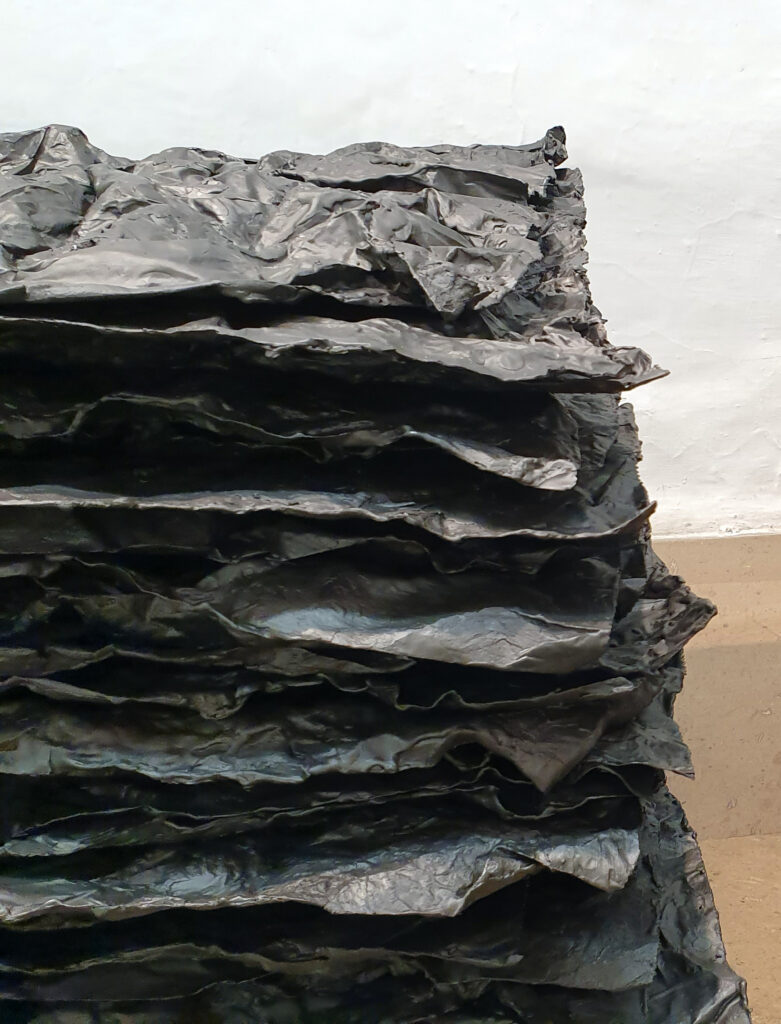Divergence.
/Deformations/
It is easy to recognise the plume of smoke that emerges from a cigarette or a pipe, but it is not easy to discern how or where all the smoke particles will move through space over time. In a similar vein, if we are to seek out other familiar images, it is not possible to follow a bank of clouds as it transforms across the sky until, ultimately, it dissipates. Our inability to predict what will happen with these gases affords us a metaphor for the possibilities of variation, and also for the forms we see in this transit, which pertain to the cognoscitive and culturally structural abilities of the gazing subject. At this point, we might ponder the limits of such capacities, but we already sense that they belong to the sphere of our own divergence.
Divergence is a moment of truth that is historically limited, constrained, as Anthony Giddens would say in his analysis of the structural constraints of society. It is almost an illusory perception, but it is integral and intimate for each person. A truth that is not directly related to reality, but to the social conditions that engender it. Therefore, there is not one single but rather many divergences of the same situation, which correlate in a dialectical way.

But, if we move towards a more diffuse terrain in relation to subjectivity, towards the sphere of the artistic, the idea of another additional path we could take acquires a symbolic potency capable of living without and within the constrained. This capacity, which bears the same name as the exhibition to which this text refers, the capacity to deform, implies the development of different situations in which the transition of matter entails a time of contemplation. Each form, original – in a recognisable sense – or deformed, is surrounded by a thick layer of interpretation, which is the modern way of understanding something[1], and that layer prefigures a desire for replacement, for something else. Perhaps for another new divergence. In this desire, a voluble form is problematic from the outset; like smoke, it does not allow us to know the destination of the process of deformation, but instead implies multiple possibilities of imprisoning abstract, potential, entities.
Deformations are actions that work with qualities of resistance or fragility of a material in opposition to externally applied forces, whereas the nature of each material is what conditions its behaviour and the types of interactions that occur around it. These characteristics describe a new situation, one of transition, which acquires a massive, integral, and above all temporal character. Hence, the degree of development of a material conditions the space of interpretation, and the forces applied pave the way for a chain of events that eventually expand the Kantian notion of experience and incorporate science, metaphysics, religion[2] and politics. In other words, constructs that indicate the existence of a dynamic that expands and feeds into the apparatus of representation.

Interpretation would not only be grounded in speculation about the static form but also the possibilities of its deformation, about the mobility of its image. Each of the works included in this exhibition is independent of its execution and meaning, but together they share certain characteristics that place them on a point of correspondence. They are all rooted in the idea that form does not contain an original meaning, but rather is a presence; therefore, they contain an element of truth, but as such they attend to the changes brought about by external forces that dilate them, break them, or diminish them, even to the point of no return.
The driving idea that pushes all these works and brings them to the exhibition space is divergence as an exercise in departure, interpretation and speculation. Each artist tackles a way of incorporating or overcoming the socio-historic conditioning factors of representation, either through self-representation, the physical decomposition of the space, the dissolution of the line, or the emancipation and digression of matter. Amparo Sard – viscosity-, Santiago Palenzuela -plasticity-, Laura Mesa -friction- and Carlos Nicanor -elasticity- open the door in Deformations onto free divergence, towards other places where they can grow, spill out or sprout. The evidence that stands out in these successive ways of approaching deformed matter is that, if form is presence, that which is given to see and think, what happens when de-form-ation enters the description of time, in the passage from one state to another?